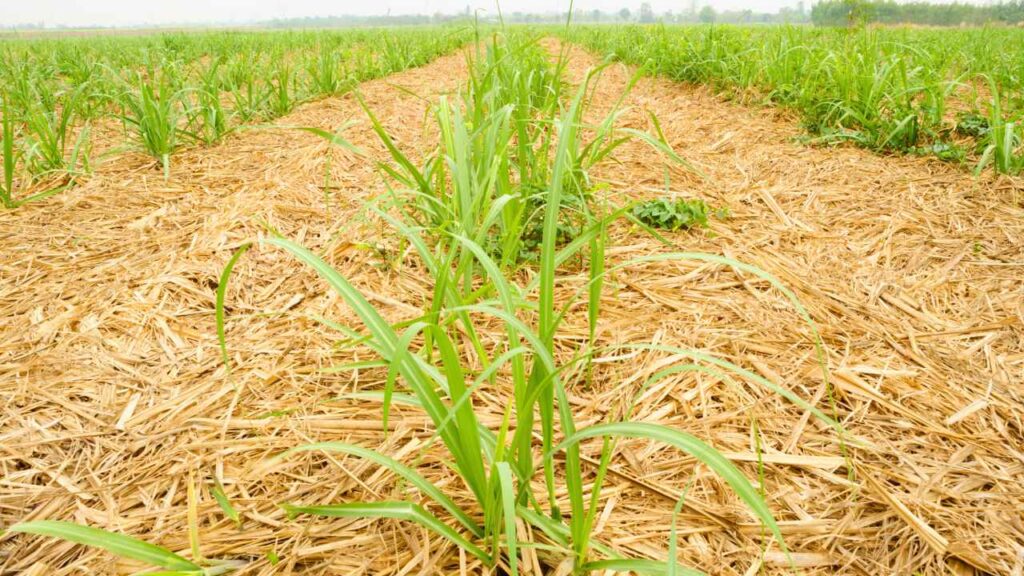Luiz Henrique Quecine Grande a b , Lucas Henrique Amaro da Silva a , John Kennedy dos Santos a , Anaila Amaral de Alencar a , Matheus Batista Néri Pereira a , Mariane Dias Macedo a , Amin Soltangheisi c , Fábio Fiori Ruiz d , Denizart Bolonhezi b e , Moacir Tuzzin de Moraes a b
- aUniversity of São Paulo, Luiz de Queiroz College of Agriculture, Department of Soil Science, 11 Pádua Dias Avenue, Piracicaba, SP 13418-900, Brazil
- bUniversity of São Paulo, Center for Carbon Research in Tropical Agriculture (CCARBON), Piracicaba, São Paulo, Brazil
- cBangor University, School of Environmental and Natural Sciences, Bangor LL57 2DG, UK
- dState University of São Paulo, College of Agricultural and Veterinary Sciences, Industrial village, Jaboticabal, SP 14884-900, Brazil
- eSugarcane Research Center, Agronomic Institute of Campinas (IAC), Km-321, Prefeito Antonio Duarte Nogueira Road, Ribeirão Preto, SP, Brazil
Highlights
- Soil hydraulic functions were evaluated under long-term tillage systems for sugarcane.
- Soil disturbance immediately impacted on soil pore space and hydraulic conductivity.
- No-tillage for sugarcane fields restores in medium time the soil hydraulic functions.
- Sugarcane under long-term no-tillage improves the soil water retention and flow properties.
Abstract
Conservation tillage systems contribute to preserving soil structure and water flux in grain crops, whereas few long-term studies have assessed impacts of no-tillage systems on sugarcane fields. We aimed to assess the impact of soil tillage systems, associated with varying degrees of compactness, on pore space and main hydraulic properties in the soil. The long-term experiment of sugarcane tillage systems, since 1993, cultivated in succession with soybean was evaluated. The tillage systems consisted of (i) packed soil samples as a proxy of recently tilled soils (T0) and immediate tillage effect, (ii) conventional tillage system, 5-years after soil mobilization (CT5), and (iii) no-tillage system with 31-years without soil disturbance (NT31). In the 31st year after the experiment was established, core (CT5 and NT31) and packed (T0) samples were collected at 0–20 cm depth. Soil hydraulic parameters were fitted using the van Genuchten-Mualem equation integrated with bulk density. The soil hydraulic properties (saturated and unsaturated), bulk density and pore distribution frequency were evaluated and discussed under a non-linear model for three degrees of soil compactness (i.e., 75 %, 85 %, and 95 %). The recently tilled soil showed lower total porosity, with macropore volume being 24.7–59.8 % smaller than CT5 and NT31 treatments, respectively, due to increments in soil degree of compactness, and a pore frequency restricted to narrow pores diameter range. The saturated soil hydraulic conductivity for CT5 and NT31 was 3.1–26.1 times greater than in recently tilled soil as degree of compactness increased, with larger differences for unsaturated hydraulic conductivity. There were slight differences in soil structure between the CT5 and NT31 treatments, indicating that, after 5 years without soil disturbances, the sugarcane fields have great potential to preserve and enhance soil structure and hydraulic properties. Thus, the adoption of no-tillage systems is the key factor in maintaining and restoring soil physical functions and sustainability.
Keywords
Saccharum spp; No-tillage system; Pore space; Hydraulic conductivity






